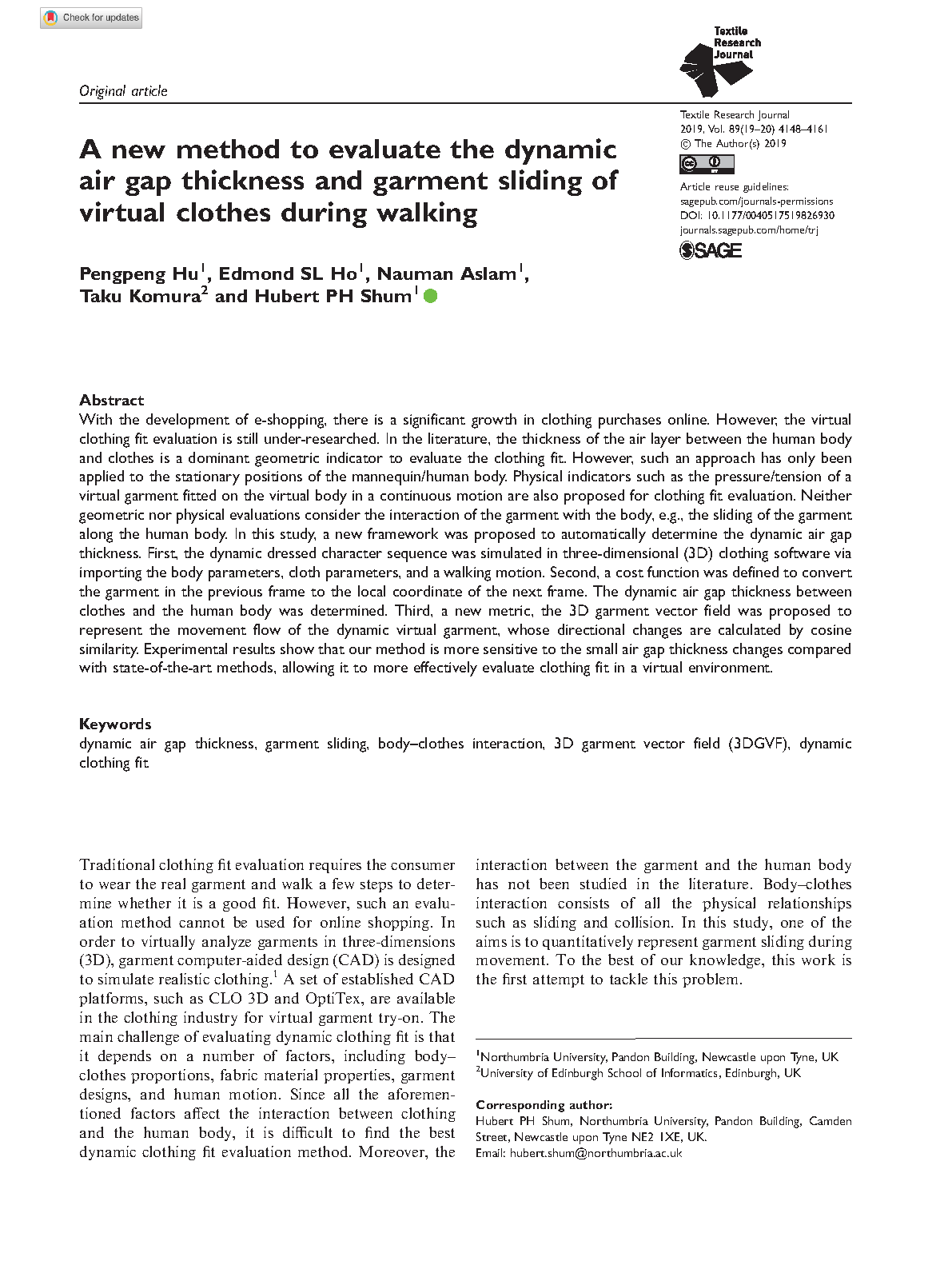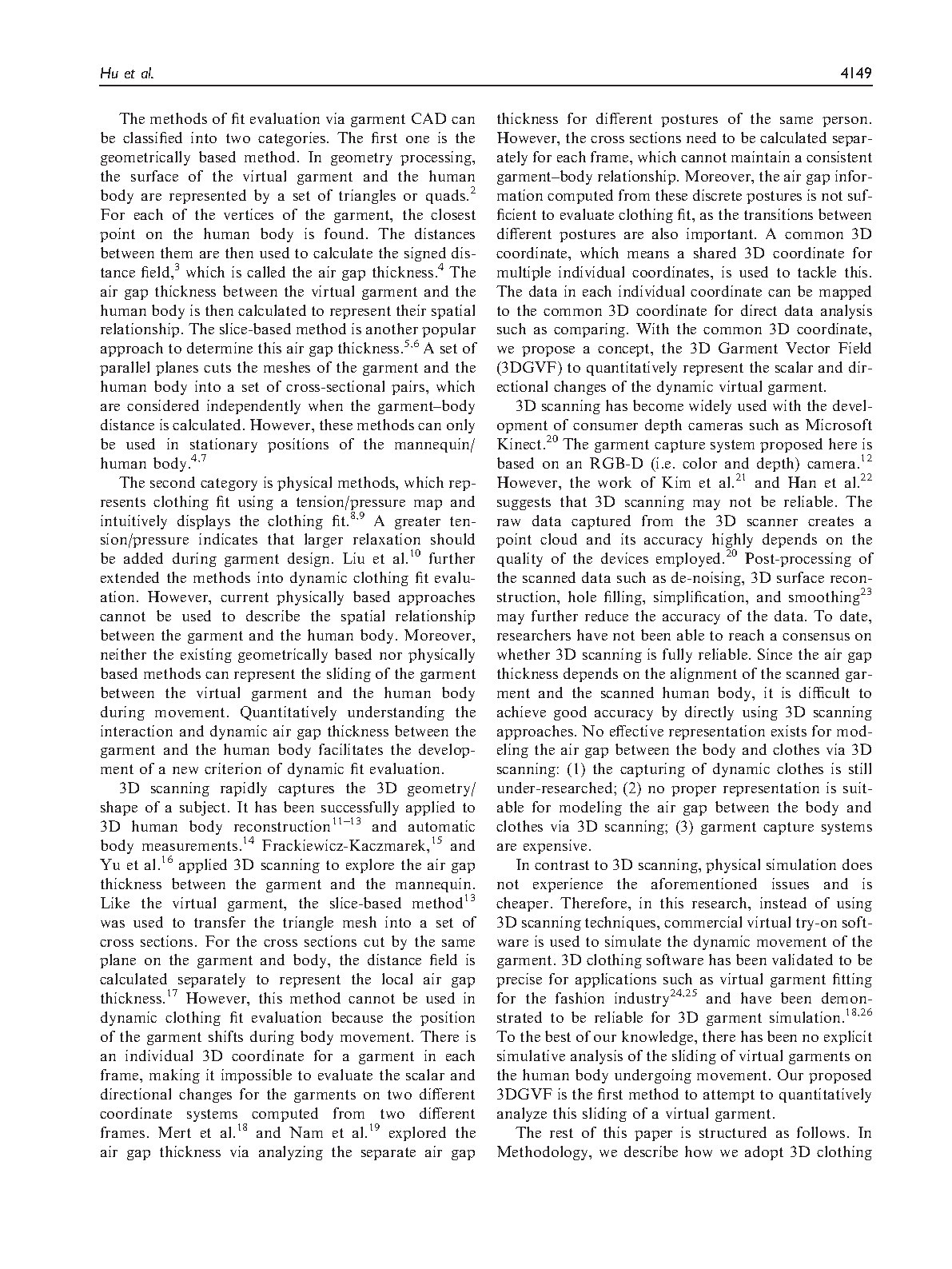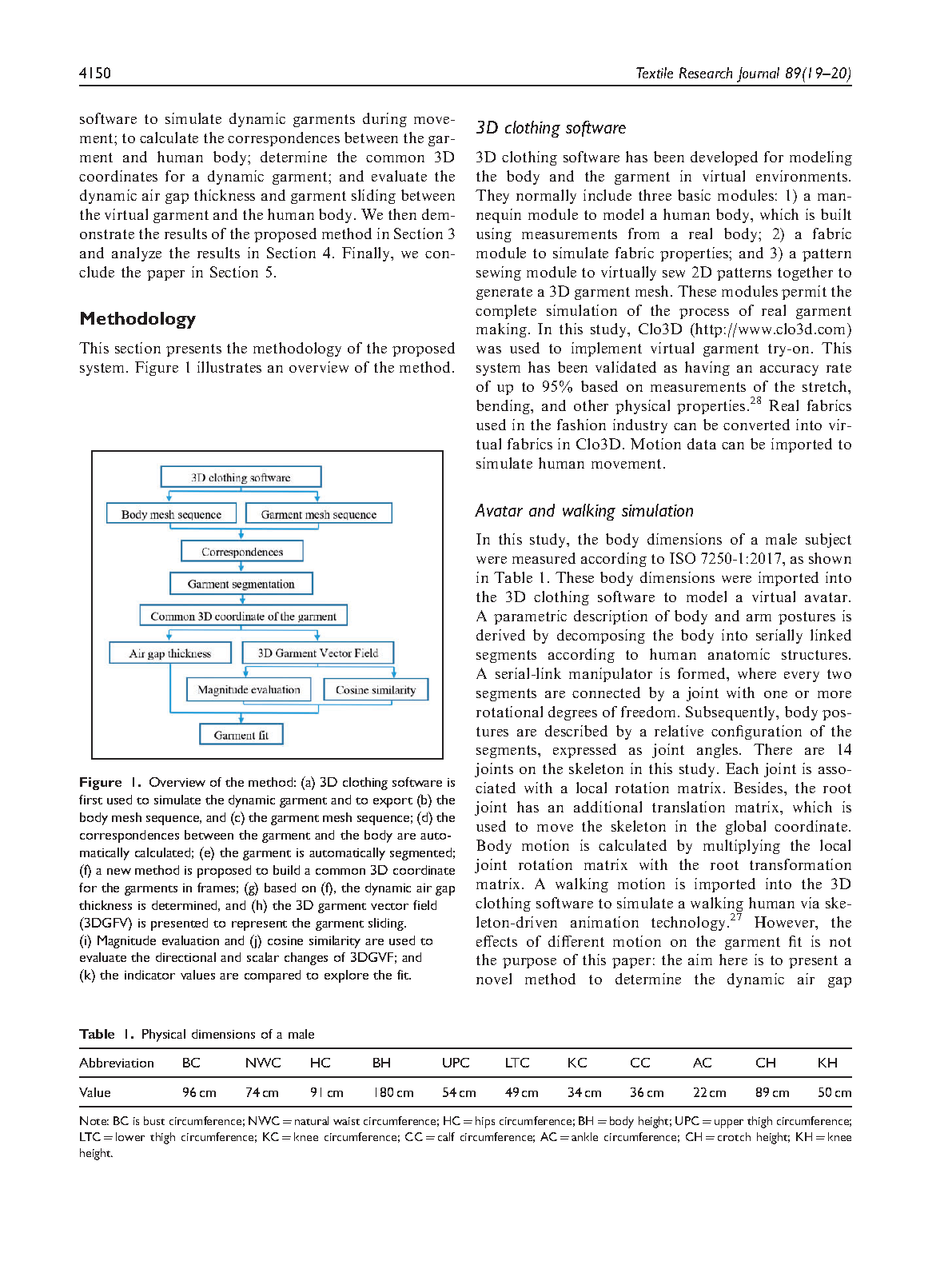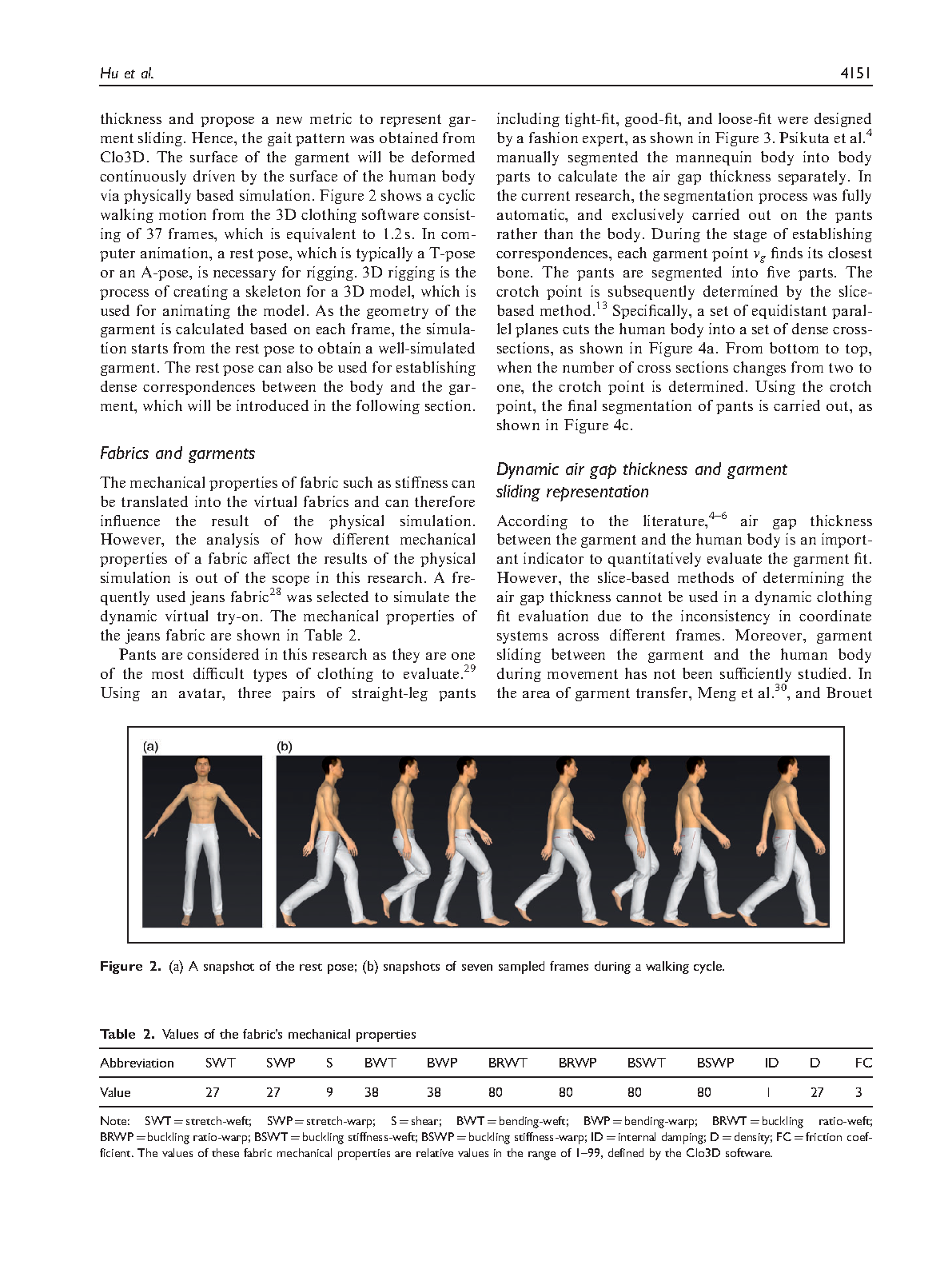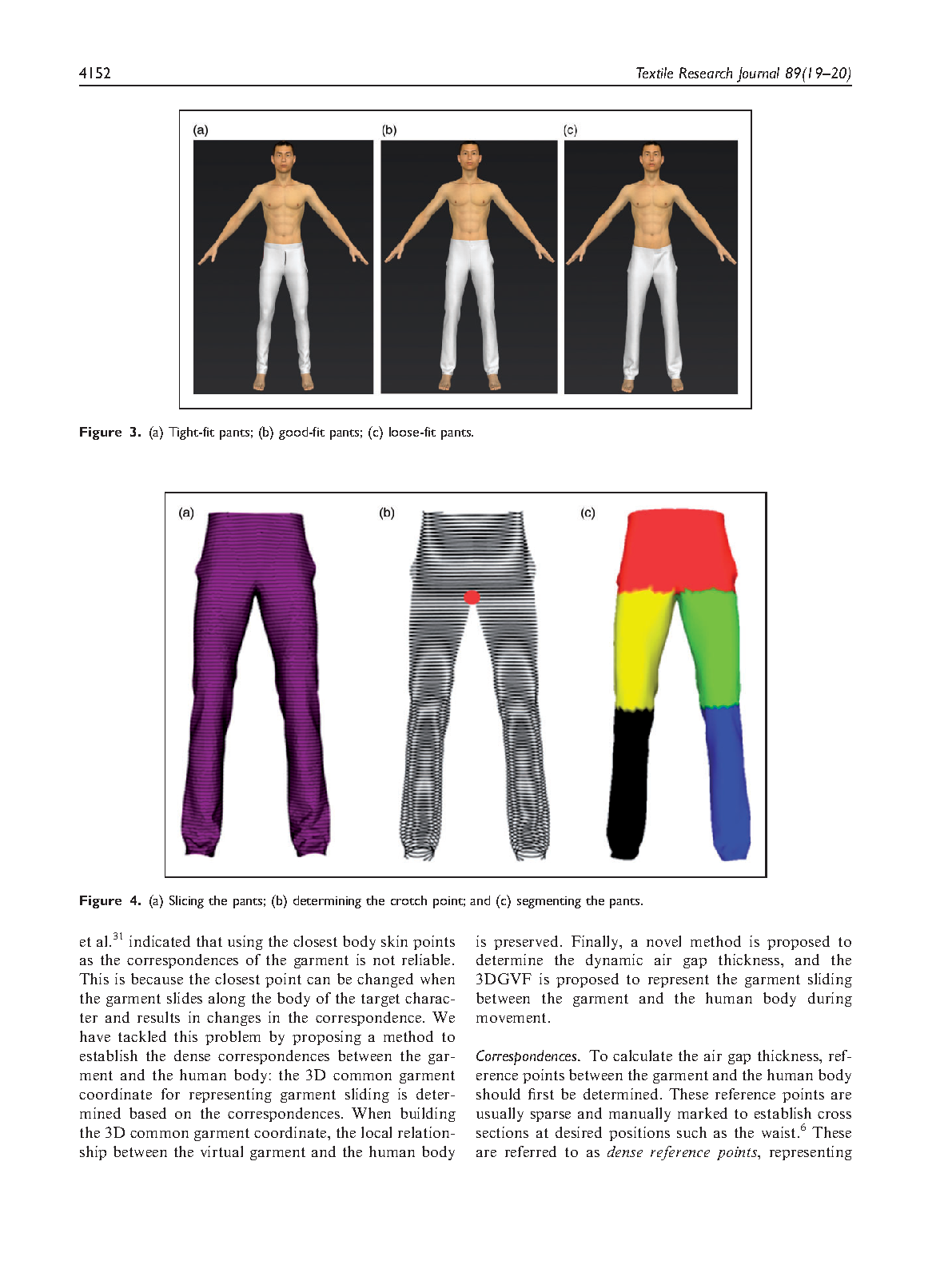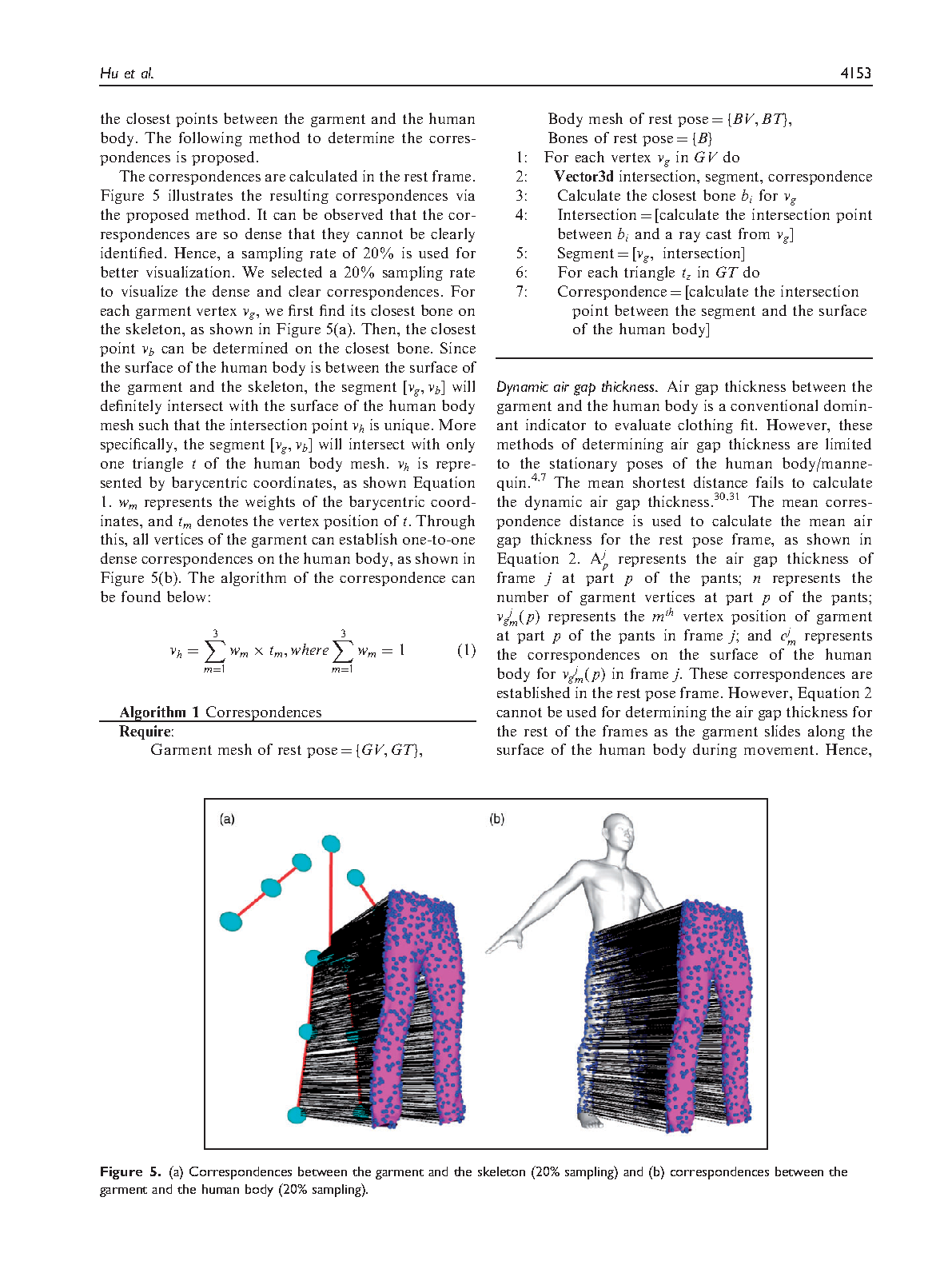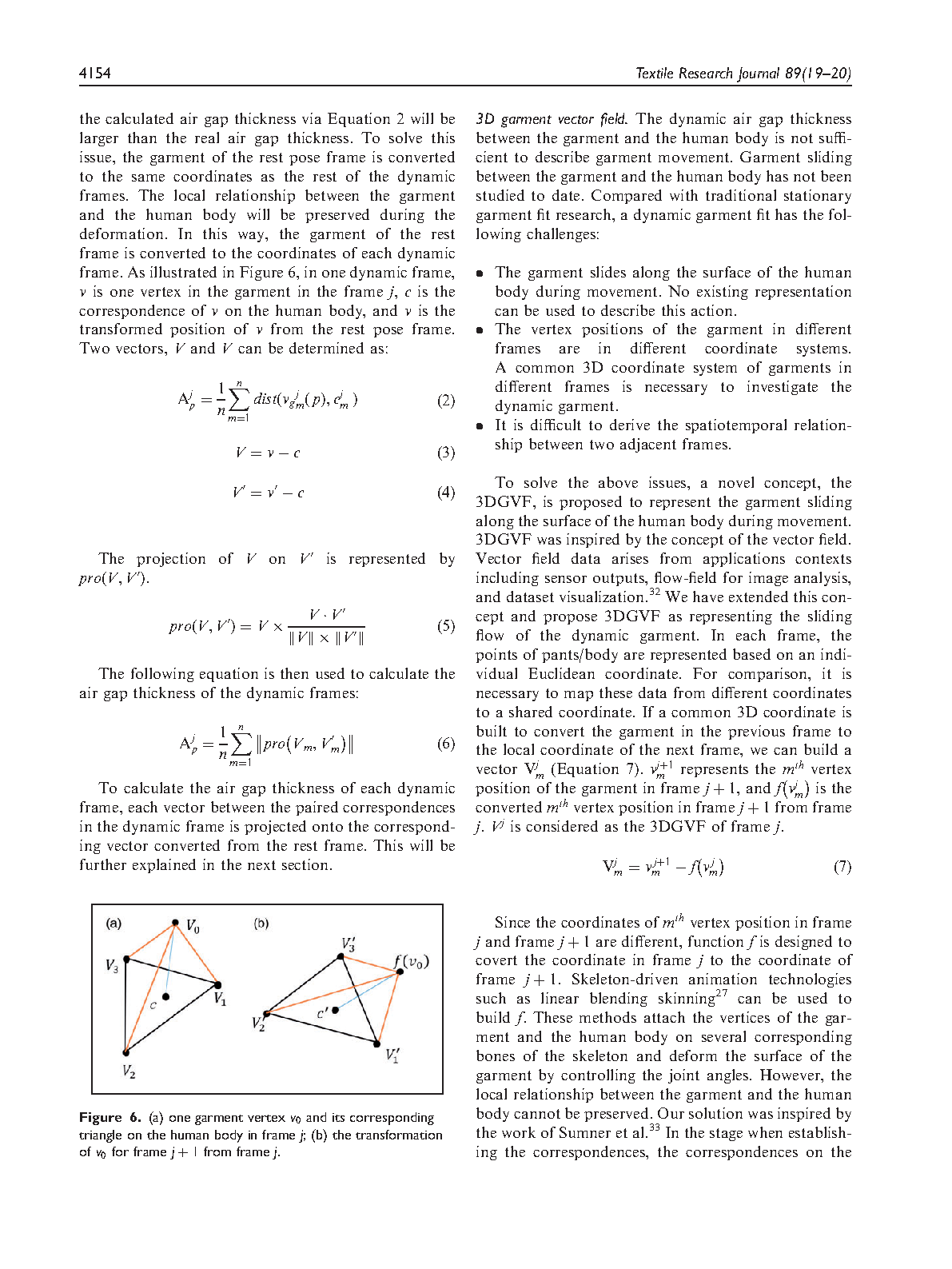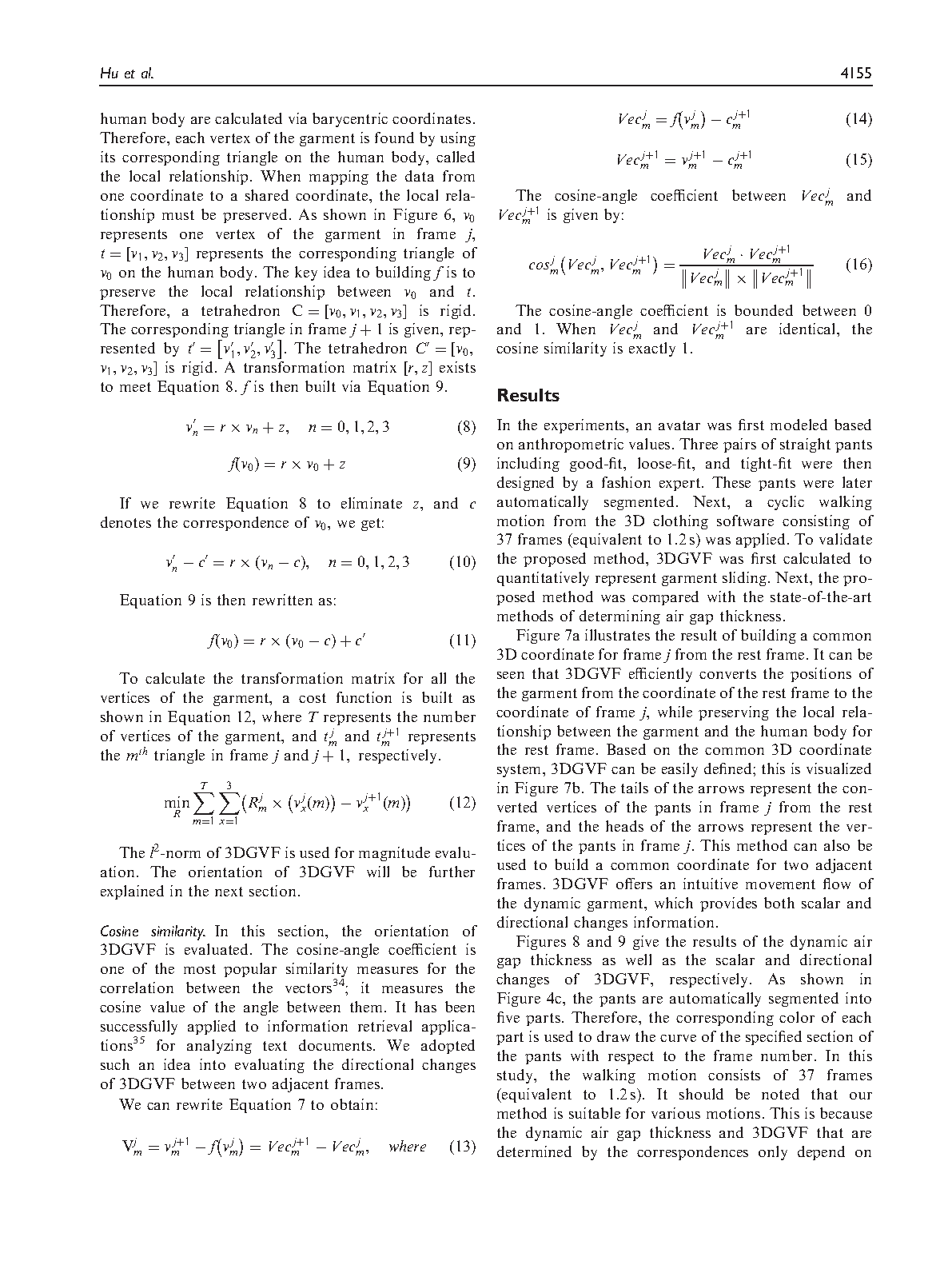A New Method to Evaluate the Dynamic Air Gap Thickness and Garment Sliding of Virtual Clothes During Walking

Abstract
With the development of e-shopping, there is a significant growth in clothing purchases online. However, the virtual clothing fit evaluation is still under-researched. In the literature, the thickness of the air layer between the human body and clothes is a dominant geometric indicator to evaluate the clothing fit. However, such an approach has only been applied to the stationary positions of the manikin/human body. Physical indicators such as the pressure/tension of a virtual garment fitted on the virtual body in a continuous motion are also proposed for clothing fit evaluation. Both geometric and physical evaluations do not consider the interaction of the garment with body e.g. sliding of the garment along the human body. In this study, a new framework is proposed to automatically determine the dynamic air gap thickness. First, the dynamic dressed character sequence is simulated in a 3D clothing software via importing the body parameters, cloth parameters and a walking motion. Second, a cost function is defined to convert the garment in the previous frame to the local coordinate of the next frame. The dynamic air gap thickness between clothes and the human body is determined. Third, a new metric called 3D garment vector field (3DGVF) is proposed to represent the movement flow of the dynamic virtual garment, whose directional changes are calculated by cosine similarity. Experimental results show that our method is more sensitive to the small air gap thickness changes compared with start-of-the-arts, allowing it to more effectively evaluate clothing fit in a virtual environment.
Publication
A New Method to Evaluate the Dynamic Air Gap Thickness and Garment Sliding of Virtual Clothes During Walking by Naoki Nozawa, Hubert P. H. Shum, Edmond S. L. Ho and Shigeo Morishima in 2020
Textile Research Journal (TRJ)
Links and Downloads
